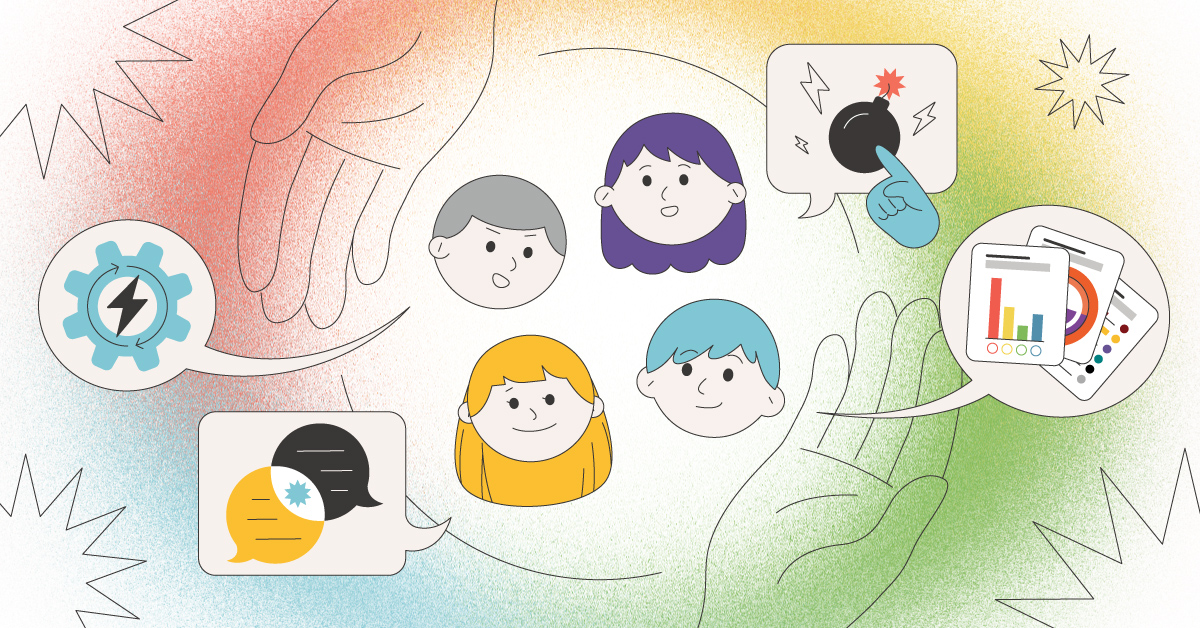
Body language is a method of communication that you likely encounter every day. Yet, how much thought do you give to the nonverbal cues that come from others? And how much body language can you accurately decipher?
Dustin Hebets, a Cognitive Behavioral Research Analyst at TTI Success Insights, has spent over 20 years studying behaviorism, nonverbal behavior and communication, and advanced/strategic interviewing and analysis. He spoke with us and answered some foundational questions to help you pick up the basics and improve your awareness of yourself and others.
TTI: What are the important aspects to know when considering your body language?
DUSTIN: First, it’s important to note that as soon as you start focusing on your body language, your attention is immediately taken away from the setting you are in. Your brain can only do one thing at a time, so if you are interacting with someone and hyper-focusing on your own body language, then chances are you aren’t listening well to what the other person is saying.
This can lead to a myriad of conversational pitfalls. Don't worry about controlling your body language; worry about being a good listener. Try to remain open and neutral with your body and focus intently on what the other person is saying. If you are focused on listening, your body will naturally show you are engaged.
TTI: What should you pay attention to when observing others’ body language?
DUSTIN: This is hard to answer simply because there is so much to observe and it takes a keen eye to pick up on most people’s tendencies.
For example, when it comes to eye contact, you can usually tell if someone is listening to you by noticing if they are steadily looking at you and if their gaze rests on you while you speak. If they are looking off into the distance or constantly looking at their phone, watch, or another person in the room, then it may indicate that they aren’t fully present.
However, some may not know that what you pay attention to is equally important as when you should pay attention. People shift their body language all the time, and it may not always be significant. Nonverbal behavior only becomes meaningful when it deviates from the person’s norm and is most informative when it is paired with a reason for shifting.
For example, watch the way someone navigates personal space when they make initial contact or introduce themselves to you. They may be very open and aligned with you, getting close and hardly having to outstretch their hand to reach you. This can signal overall comfort and an openness to engaging. Conversely, someone may keep a farther distance, keeping their lower half farther away and leaning to stretch out their arm to shake your hand. If this happens, it’s a sign there is discomfort or unease within the person, whether it’s in regard to the exchange, you, or the environment. Those who enter your physical space confidently might do so because they are eager to talk to you and excited about personal connection; while those who are keeping distance from you may be more uncomfortable with interpersonal interaction. Any insights you gain from an initial introduction are reflective of the other person’s current experience, and it’s important to realize that it might not be related directly to you; it’s simply a glimpse into how they may be feeling in that instance.
Another time to pay close attention is when body language changes during a conversational exchange. When a new person walks up to a group engaged in dialogue, do the group members orient their bodies toward the newcomer and naturally open the space for them to join, or do they orient their bodies away without a break in conversation?
Simply building your awareness of environmental shifts and associated nonverbal behaviors can reveal a lot about where someone is focusing their attention from moment to moment.
TTI: What are the most common misconceptions about body language?
DUSTIN: The list is nearly endless. As previously mentioned, we change our body language all the time and it’s not always significant.
Here are some common misconceptions:
Any singular behavioral expression is significant or meaningful.
You might see someone shift in their seat and think it’s because they are uncomfortable with what someone said, but in reality, they’re shifting because their back hurts. It’s important to avoid associating singular behaviors with assumed absolute truths. A singular gesture or expression does not always mean something.
A single gesture or nonverbal display is always good to use regardless of the setting.
You might get a really great reaction from giving someone the “thumbs up” sign, but in some cultures, it could be considered offensive. Similarly, you might wave emphatically at someone and they wave excitedly back, but the next person you try it on may be more introverted and feel uncomfortable by so much focused energy directed at them.
You can always tell when someone is lying by observing their body language.
No matter how often you see it on TV, you cannot always tell when someone isn’t being truthful. Human beings are extraordinarily complex, so eye blinks and tonal shifts, or lack thereof, do not always imply someone is lying.
Physical contact with someone helps them like you or feel more comfortable with you.
You may think you had a great conversation with someone, so you shake their hand and give them an extra pat on the back or shoulder. Although some people will take this as a positive thing, it can also cause great discomfort in people who choose to keep a farther physical distance from others. They may see it as encroaching on their personal space and it could have the opposite effect you are seeking.
TTI: How does body language change under stress or anxiety?
DUSTIN: It really depends on the person, as someone's body language can be as unique as their personality. Body language is also influenced by lots of other factors like:
- Cultural norms
- Life experience
- Situational environments
- Stress and anxiety
Shifts in deepness or shallowness of breath, perspiration, heart rate, and level of physical comfort (i.e., having a headache or stomach ache) are signs most people would recognize within themselves when feeling stressed, but they can also be observed in others.
If someone is stressed, you may notice they have a confined physical presence and will pull themselves inward to take up a minimal amount of space. They may also be restless: unable to sit still and shifting their attention quickly from one thing to another. Other signals include a quickened pace or carelessness in relation to their proximity to others. If you see someone move through an area quickly with little regard for others’ personal space, especially less than what is typical for them, then they may be more focused on their stressors than on their physical environment.
Again, no singular behavior is always meaningful, but they can be useful signs if they fall outside of someone’s normal behavior.
TTI: How can professionals use body language to improve communication and influence?
DUSTIN: The first step is to practice being a good listener and an astute observer before you try to change your body language to gain influence. This practice takes time. It is ill-advised to attempt to change your body language, especially if it's inauthentic to your typical behavior, without diving into the study of nonverbals first.
Again, there is no single trick that will always give you an edge or help you influence someone. One expression might give you brief success in one setting, but it will likely fail if used in the wrong environment. Stay true to yourself and what feels natural to you. It will become very obvious to others when you attempt to augment your body language to influence them or the situation.
TTI: What are the differences between intentional and unintentional body language?
DUSTIN: Intentional body language is consciously expressed and typically used to strengthen or enhance communication. These include gestures and expressions used to bolster, explain, or give additional meaning to a message. Examples include the thumbs up sign, pointing at something, nodding in agreement, smiling, frowning, or any other expression conveying emotion.
Unintentional body language is usually unconsciously expressed or reflected to others, where it can be observed and sometimes interpreted. It often arises from a physical manifestation of an internal process or experience. These unconscious expressions can include forms of self-soothing in response to something causing emotional stress or discomfort. For example, someone may frequently touch their neck while speaking, cross their arms or legs to protect themselves from discomfort, or bite their nails and/or play with their hair when they are nervous.
TTI: In what ways does body language shift in digital communication settings, like on video calls?
DUSTIN: Plainly stated, body language is simply harder to observe in digital settings. Seeing people through a camera gives you a distorted image that is not as vivid as seeing them in person, so your brain isn’t picking up on the unconscious cues it normally would. For example, hands are very informative, but you usually can’t see them on video calls.
Additionally, people tend to look around when speaking on video calls because their attention is divided, so eye contact becomes harder to observe as well. “Direct eye contact” over video means looking directly into the camera while speaking to give the appearance of looking straight at the attendees, but most people don’t do that. They look at the faces of the attendees or their other monitor, and therefore, their eyes are shifted away. They may also look at their phone, out the window, etc., so you can’t always tell how engaged they are.
One thing to note is that people tend to become less aware of the nonverbal behaviors they are presenting since they aren’t physically in a space with others. If you think about it, sitting with a group of people on a video call feels very different than sitting with a group of people in a physical space. It doesn’t feel like eyes are on you on a video call, especially when you are listening and not speaking, so people might be unaware of what they present. All in all, the digital setting degrades how effectively you can communicate, especially when emotions are involved.
Special thanks to Dustin for having a conversation and breaking down a complex subject!
If you’re interested in learning more about your behavior, TTI is here to help. Contact us here to get started.



